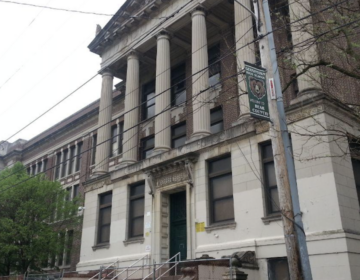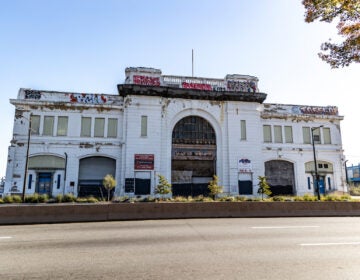Zoning Code Commission heats up

Feb. 13
By Matt Blanchard
For PlanPhilly
You can’t argue with free coffee and blueberry muffins, but after seven months of breakfast buffet “learning sessions,” members of the Zoning Code Commission are getting antsy for action.
“What are we here for?” attorney Rich DeMarco asked at one point in Wednesday’s meeting. “Are we here to hear nice presentations?”
With five months left in their mandate to rewrite Philadelphia’s 1962 zoning code, the ZCC has heard from dozens of experts but has taken no actions and hired no staff. Since a similar group in Chicago took four years to rewrite their code, there’s no doubt our ZCC will be asking city council for an extension.
At each meeting, the ZCC learns about urgently-needed reforms on everything from global warming to the height of fences, experts hold forth on why Philadelphia is so far behind, and commission members get a little itchier.
“Some of us aren’t going to be here in four years and we want to see some action,” said real estate executive John Binswanger.
So on Wednesday, the ZCC boldly took its first significant action, which was to form a subcommittee.
It may sound like a piece of bureaucratic comedy, but the subcommittee is an important first step to hiring consultants, and creating an all-important “plan of work” to divvy up the complex task that lies ahead.
“The most important thing you’ll do…”
It was an impassioned presentation on historic preservation that got the commission riled up on Wednesday.
John Gallery, executive director of the nonprofit Preservation Alliance for Greater Philadelphia, began bluntly: “I’m going to try to convince you that the most important thing you’ll do as a Zoning Commissioner is to preserve Philadelphia’s historic resources.”
Underlying so much of Philadelphia’s appeal – and its entire tourism economy — are historic hotels, homes, museums, parks and streetscapes, Gallery said.
“It is no surprise that the neighborhoods with the highest property values are those with the greatest historic character,” he added. “These are neighborhoods people love, and love to live in, because of that character.”
Yet Philadelphia is “far behind the curve” in historic preservation planning. The city routinely grants zoning variances that result in jarring visual conflicts (here he showed a slide of 108 Arch Street); the code itself results in 10-story blank walls (more shots of Old City); and a mere 4 percent of city buildings have ever even been evaluated for their historic value.
“We don’t even know what we have,” he said.
Saying his organization was ready to put down $50,000 to help develop a historic preservation plan for the city, Gallery called for the ZCC to act immediately. He proposed a one-year moratorium in historic districts that would stop all but minimal deviations from the current zoning code.
“My challenge to you is to make zoning reform real,” Gallery said. “I don’t think zoning reform is going to be real unless someone stands up and says, ‘It starts now!’”
That last idea propelled Craig Schelter to his feet. Schelter, a former City Planning Commission who now represents developers, urged the commission not to act on preservation issues without hearing from developers, too.
“I’ve been to a lot of these meetings,” Schelter said. “This is the first one I’ve been to that was an open advocacy section.”
How Buildings (Don’t) Get Saved
The morning’s shocker came from City Planning’s Laura Spina, who explained that the vaunted National Register of Historic Places can’t really do that much to protect a historic building.
“The National Register is mostly honorary,” Spina said, and mostly used by developers to access historic rehabilitation tax credits.
The real legal muscle behind preservation is vested in the local Philadelphia Register and the group of 14 appointees that maintains it, the Philadelphia Historical Commission.
It is the Historical Commission that reviews plans to alter any of 10,700 buildings, structures, sites, or objects on the Philadelphia Register. It is the Historical Commission that has the power to stop a project that could damage a protected resource. And it is the Historical Commission that should be approving new historic resources for protection on the register.
That leads us to the second shocker of the day: While Philadelphia is among the most historic cities in America, the Historic Commission employs a puny staff of five people to monitor more than 10,000 buildings.
According to statistics tucked into the tail end of a presentation by HC director Jonathan Farnham, that’s 1,780 designated historic sites per staff member, a ratio that’s the worst of any large US city.
Historic Sites per Staff Member
– 458 in New York City
– 487 in Chicago
– 971 is national average
– 1011 in Boston
– 1780 in Philadelphia
Preservationists grumble that low staffing levels at the HC leaves register nominations, particularly for historic districts, sitting on the Historical Commission shelf for as long as five years.
It all traces back to the Historical Commission’s budget, which totals just $325,000.
That sum should sound familiar if you’ve been following the controversy over city council’s Deferred Retirement Option Plan program (DROP).
Under the program, Councilwoman Joan Krajewski took a $300,000 retirement incentive just for taking a one-day hiatus before returning for her eighth term in council (Mayor Street retired with a lump sum of $452,000).
If funding is an expression of Philadelphia’s priorities, our architectural heritage and Joan Krajewski’s nest egg look just about tied.
Contact the reporter at blanchard.matt@gmail.com
WHYY is your source for fact-based, in-depth journalism and information. As a nonprofit organization, we rely on financial support from readers like you. Please give today.





